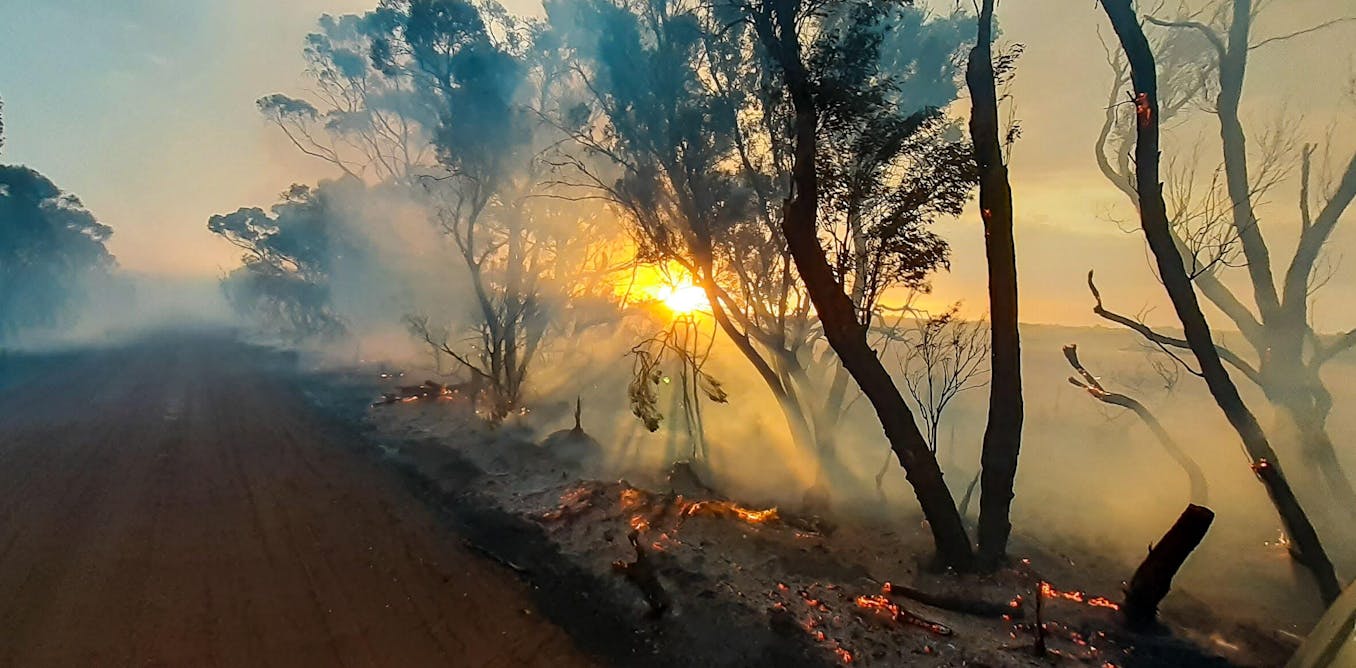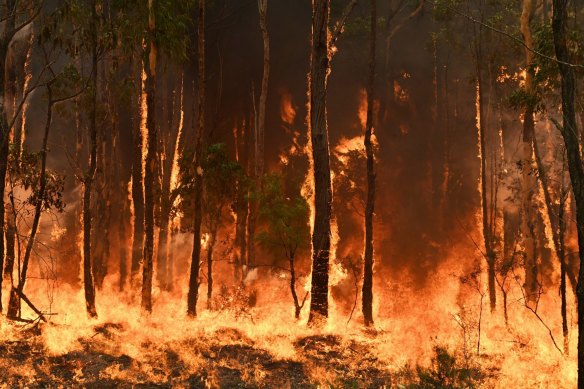Professional Recommendations on Bushfire Monitoring for Improved Fire Security
In the world of bushfire monitoring, the value of expert advice can not be overemphasized. With the enhancing frequency and severity of wildfires, it is imperative to look for advice from those skilled in the ins and outs of fire habits and mitigation approaches. From understanding the nuances of bushfire habits to implementing practical procedures such as firebreaks and defensible spaces, there exists a wealth of understanding that can dramatically enhance fire defense initiatives. However, the crucial exists not just in the individual parts of fire management but likewise in their cohesive integration right into an extensive approach. By diving right into the know-how used in the complying with discussion, a clearer course towards bolstered fire security can be brightened.
Comprehending Bushfire Behavior
To efficiently manage and alleviate the impact of bushfires, it is crucial to have a thorough understanding of bushfire behavior. Bushfires are intricate natural phenomena influenced by different aspects such as climate condition, topography, fuel load, and human tasks. Comprehending just how these elements interact is essential in forecasting the behavior of a bushfire, enabling far better planning and response methods.
One secret aspect of bushfire habits is fire spread. This incorporates the rate at which a fire breakthroughs, the instructions it takes, and the strength of the fires. By studying previous fire occurrences and evaluating fire patterns, professionals can anticipate just how a bushfire may proceed under specific conditions. Bushfire Risk. This understanding is critical in devising emptying plans, alloting firefighting resources efficiently, and applying threat decrease procedures.
Additionally, understanding cinder attack, finding, and fire whirls is necessary in understanding the full degree of bushfire habits. By delving into these details of bushfire habits, authorities can enhance their readiness and reaction abilities, eventually minimizing the impact of these harmful occasions.
Carrying Out Firebreaks and Defensible Spaces
Understanding bushfire habits is fundamental for properly implementing firebreaks and developing defensible spaces to enhance fire defense. Maintaining these firebreaks with normal cleaning of debris and plants is essential to guarantee their efficiency throughout a bushfire event.

Correctly implementing firebreaks and defensible rooms needs thorough planning, regular maintenance, and area cooperation to make sure the greatest degree of fire protection for residential properties and lives in bushfire-prone areas.
Making Use Of Early Warning Systems
Deploying advanced early caution systems is important for timely discovery and informing of potential bushfire hazards. By making use of sophisticated modern technologies such as satellite surveillance, weather sensing units, and thermal imaging, authorities can successfully spot and monitor fire-prone areas ignition sources at the earliest phases. These systems can give real-time data on fire instructions, behavior, and intensity, permitting prompt decision-making look these up and rapid implementation of firefighting sources to the affected locations.
Early warning systems also play a vital duty in informing locals and areas about putting in jeopardy bushfire risks. Via automated sirens, message notifies, call, and social media sites notices, individuals can be swiftly notified about emptying orders, safe shelter areas, and emergency treatments. This proactive method not only conserves lives but likewise lessens building damages by making certain that individuals have adequate time to evacuate and secure their homes.
Developing Discharge Plans
Efficient emptying plans are essential for guaranteeing the safety and security of homeowners in bushfire-prone areas. Creating well-balanced evacuation methods is vital in minimizing the risks positioned by bushfires and securing human life. These plans should be comprehensive, taking into account numerous aspects such as the topography of the area, the thickness of vegetation, and the likely rate and direction of the fire's spread.
When creating discharge plans, it is necessary to establish clear discharge routes and assembly factors where residents can gather securely. These courses must be on a regular basis preserved to guarantee ease of access during emergency situations. Furthermore, interaction approaches must remain in location to sharp locals of impending risk and supply clear directions on discharge treatments.
Cooperation in between regional authorities, emergency situation solutions, and neighborhood participants is important in Recommended Reading creating efficient evacuation plans. Normal drills and exercises must be performed to acquaint citizens with the procedures and make certain a swift and organized emptying when a bushfire intimidates the area. By focusing on the development of robust emptying plans, neighborhoods can improve their durability to bushfire emergencies and minimize the possible influence on residential or commercial properties and lives

Involving in Area Readiness
In the realm of bushfire management, fostering neighborhood preparedness plays a crucial function in strengthening the strength of residents residing in risky locations. Involving in community preparedness entails enlightening citizens on bushfire risks, promoting fire safety and security methods, and establishing emergency plans jointly. By proactively involving the community in preparedness initiatives, individuals become more educated and equipped to take aggressive procedures to guard their lives and buildings throughout bushfire incidents.
Community readiness initiatives frequently consist of carrying out fire drills, developing interaction networks, his explanation and organizing training sessions on fire reductions techniques. Additionally, urging cooperation amongst next-door neighbors to develop a cohesive support group can considerably boost the total readiness degree of an area. The possibility of minimizing damage and making certain safety and security increases substantially. when residents are educated and outfitted to react efficiently to bushfires.
Verdict
Finally, reliable bushfire management requires a detailed understanding of fire actions, the execution of firebreaks and defensible areas, the use of very early warning systems, the growth of discharge strategies, and neighborhood involvement in readiness initiatives. By including these techniques, communities can improve their fire protection procedures and lower the effect of bushfires on both property and lives. BAL Assessment. It is important for all stakeholders to interact to create a safer setting despite this natural catastrophe
To properly reduce the impact and take care of of bushfires, it is critical to have a thorough understanding of bushfire actions. By studying previous fire incidents and evaluating fire patterns, specialists can anticipate just how a bushfire could proceed under particular problems.Understanding bushfire actions is fundamental for properly carrying out firebreaks and developing defensible areas to improve fire protection. Involving in community preparedness includes informing locals on bushfire threats, advertising fire security practices, and creating emergency plans jointly.In conclusion, efficient bushfire management requires a thorough understanding of fire actions, the execution of firebreaks and defensible spaces, the use of very early warning systems, the development of evacuation plans, and community involvement in readiness initiatives.